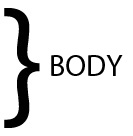How to write a Retirement Letter
How to Write a Retirement Letter
Writing a retirement letter is based on your relationship with your head/supervisor. If you have a warm and cordial association with your superior your letter can be written in an informal manner. And if you have strictly official relationship with your superior your letter has to follow all the rules of a formal letter. Following the format of business or official letters - Full Block Style, Semi-Block Style, Modified Block Style or Modified Semi-Block Style can be used. Writing retirement letter is both emotional and technical process. Moreover, there are mixed emotions. On one hand you are glad that you are retiring and on the other hand you will never work in the place and won't see the familiar faces. But there you have to be more technical than emotional as it is largely a formal type of letter.
Retirement Letter Writing Tips
- Organise the basics – Even before you prepare a draft or rough copy of your letter you need to collect and verify all the information which needs to be mentioned in the letter. This information includes the effective date of retirement, time span of career service provided, your offer of services pre-retirement, reason for early retirement etc.
- Drafting the Retirement Letter – A conventional approach applicable in all types of letters, create a draft of your letter. Drafting removes/reduces mistakes before you send the original copy. In case of voluntary retirement the draft provides the sender some extra time to think over his retirement. In case of informal retirement letter you can pour out your emotions for the time being and remove the unnecessary before the final letter.
- Appropriate Information – Being, mostly a formal letter it is important to provide only the relevant information. Information that needs to be kept in mind while writing the letter includes the date the letter is written, years of service, official date of retirement, work ID number and current contact information. A short paragraph to show the employee's gratitude to the company is appropriate, but should not be too lengthy. The employee will also want to write what their intentions are for returning company property and if they plan to continue on with the company insurance plans.
- To the Point - The retirement letter has to be clear, concise and stick to the facts even when written in informal way. It should be clearly written with no room for any misunderstanding. Maintain a graceful and cordial tone. Avoid heavy vocabulary, long sentences and unnecessary explanations.
- Positive Comments – Retiring from job doesn’t mean retiring from life. You may feel tempted to settle score with co-workers or seniors. However, it is very unprofessional and cheap to do so. Moreover, you will come across your rivals in real life at one time or another and your rivals may want to avenge your action. So do not try to set the record straight or bring up past issues. Leave all these and mention the good times and the things you learned during your tenure. Your retirement letter should not have innuendos, puns or jokes unless you have intimate relation with the addressee.
- Appropriate Authority – The letter must be addressed to the appropriate authority. You may not know the exact addressee, in such a case ascertain from senior or staff about it. Sometimes times there may be several heads to whom the letter is supposed to be sent, such as the CEO of the company, the human resource department and their supervisor. In this case, the highest ranking official should be sent the main letter and send the others a copy with CC written at the bottom of the letter.
- Offer your Assistance - Offer your assistance to the organization during the period of transition and. Provide your residential address, phone number and email so that the firm can contact you whenever the need arises.
- Proofread you Letter – A formal practice for a formal letter. Check your grammar, spellings, sentence formation and structure. Check the accuracy, clarity and a sense of completeness of your paragraphs. Keep your tone consistent and use professional fonts like Times New Roman or Arial and maintain the same.
- Timely Intimation - Check your company policies regarding the time period of pre-intimation of retirement and then submit the letter. Timely intimation results in timely action which is mutually beneficial as the company is able to find a replacement and the employee receives all the benefits in time.
- Keep a Copy – Always maintain a record of your communication with the officials and in this case, it is the copy of retirement letter. This is done to ensure the proof of sending the letter and as a preventive measure against misplacement of the letter.
Retirement Letter Formats
Formal Retirement Letter Format
|
Letterhead Date (can be positioned to the left, right or centre, before/after or at the start) Recipient's Name (specific official or person) Reference or Subject (as required) Dear Recipient (Salutation) 1st Paragraph - Inform your superior about your retirement with date and month 2nd Paragraph – Few lines about your experience in the firm and how it benefitted you 3rd Paragraph – Offer any support or service after retirement
Subscription - Thanking you, yours sincerely etc. Your Signature Your Typed First Name Last Name Your Contact CC: Forward it to multi-receivers |
Informal Retirement Letter Format
|
Date (can be positioned to the left, right or centre, before/after or at the start)
Dear Recipient (Salutation) 1st Paragraph - Inform your superior about your retirement with date and month 2nd Paragraph – Few lines about your experience in the firm and how it benefitted you 3rd Paragraph – Offer any support or service after retirement
Subscription - Thanking you, yours sincerely etc. Your Signature Your Typed First Name Last Name Your Address Your Contact CC: Forward it to multi-receivers |


